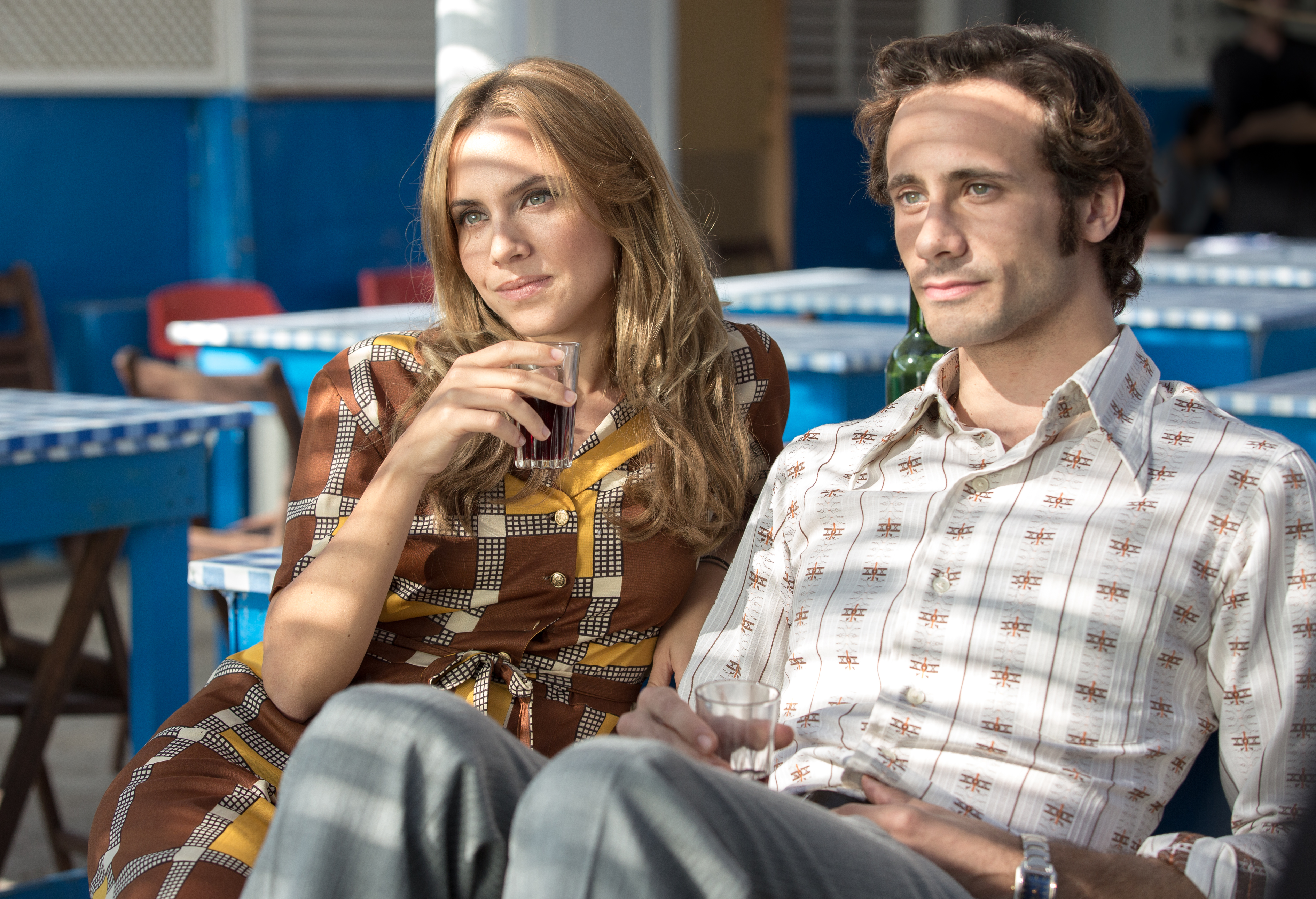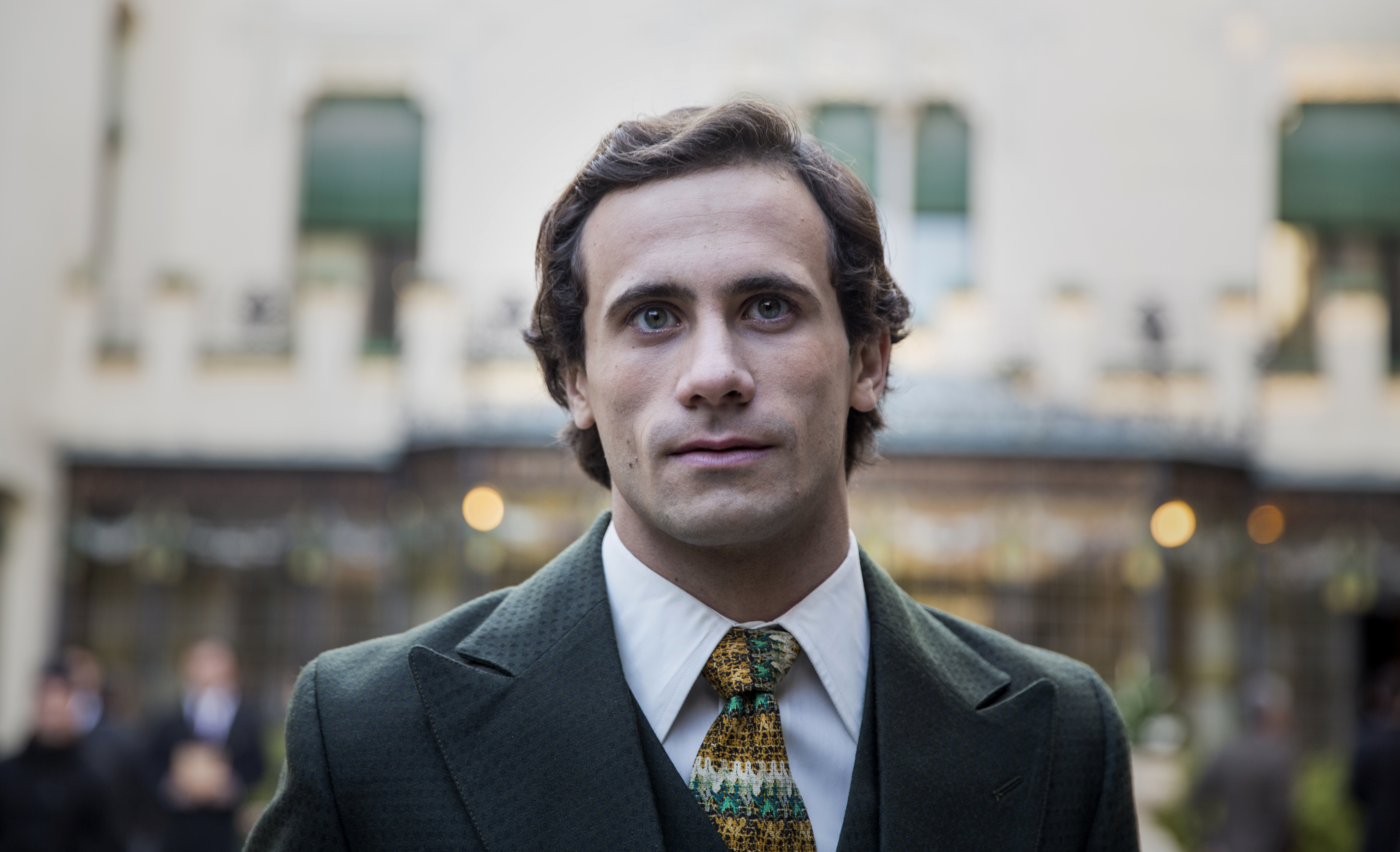Conecta Fiction Festival: Mariano Barroso on ‘What the Future Holds,’ the New TV Revolution
By John Hopewell
LOS ANGELES (Variety.com) – SANTIAGO DE COMPOSTELA, Spain — In one early emblematic scene of Mariano Barroso’s “El día de mañana” (What the Future Holds), the latest Movistar + original series, Justo, a village lad who arrives in Barcelona in 1967, goes for a walk by the Barceloneta beach with Carme, who works in her uncle’s printers.
It’s cold – she wears a red overcoat – but the sun dazzles. Not much over 20, they’re celebrating their first profits from a newfangled home catalog scheme Justo’s thought up. She talks about her parents’ dying in the 1962 flood. One day, she confides, she’d like to live in a big white house on a mountain, surrounded by trees. They walk onto the sand, and kiss. The world seems theirs for the taking.
Adapting Ignacio de Martínez Pisón’s same titled-novel, “What the Future Holds” is set during the first time in history, save for the brief 1930s Republic, when Spaniards, coming out of Spain’s dire post-Civil War, could hope in their millions, flooding into big cities, for a better life. It could hardly be worse.
Justo, however, is already thinking of siphoning of revenues from catalog clients’ up-front payments to cost a miracle-worker’s cure for his bedridden mother. He’ll pay back Carme later. An orphan, lacking in his case a moral compass, Justo is at once a doting son, loves Carme with devotion, an entrepreneur ahead of his times, a social climber, a conman, a conniving Francoist secret police snitch, and maybe a political martyr. But his lack of principle, in a broad allegory for modern Spain, blights a bright future. Carme and Justo begin as innocents. Carme learns to carve out her own destiny; Justo learns too late.
Directed by Barroso (“Washington Wolves,” “Todas las mujeres”), and produced by Movistar + and Mod Producciones – headed by Fernando Bovaira, whose producer credits include Alejandro Amenábar’s “The Others” and Oscar winner, “The Sea Inside” and Alejandro G. Iñarritu’s “Biutiful” – “What the Future Holds’” marks one more instance of Movistar + teaming with notable cineastes moving ever more into the premium series space. Its premiere was the big highlight of the first Conecta Fiction Festival in Santiago de Compostela. It stars three of the leading actors of a young generation in Spain: Oriol Pla (“Incierta Gloria”), Aura Garrido (“The Wishful Thinkers,” “The Department of Time”) and Jesus Carroza (“7 Virgins”). Variety caught Barroso during the Festival when, like other film directors working in limited-episode drama series, their creative excitement – and potential . was still fresh in his mind.
One – or the – key creative decision in “What the Future Holds” was to adapt the novel’s multiple first-person accounts about Justo, made in the novel by a broad gallery of other characters, into a chronological serial which consistently discovers new aspects of Justo, and indeed of other figures…
Mariano Barroso: The novel has multiple voices, perspectives. What I like most about it is that every character has a different take on Justo. That seemed very real. We tend to tell stories about people who have little dimension at all. Here the multiple voices open up new dimensions. The challenge was how to channel this information and also give a voice to Justo: In the novel, he doesn’t have one. But it was a delight, a privilege to work at these challenges! They allow you to play with the unexpected, to add layer after layer to not only Justo’s character but those of other figures: Carme, Mateo, the secret police torturer, for example. This was perfect for a six-episode series.
One of the most fascinating features of new international TV is the importance it pays to character, often above plot, and the complexity and contradictory nature of some characters. “What the Future Holds” seems one case in point….
Yes, its structure is somewhat different from conventional TV. But it’s also a story anybody can identify with, because it tells very basic stories, those of characters, Justo, Carme, Mateo, who are twenty-something, have dreams, and are in a city, the perfect place to achieve them. They’re convinced, moreover, that they can make their dreams come true. They’re passionate characters, and joined by an invisible link: All three are orphans. None have references when they start out. Although they don’t know it in a very obvious way, all are searching for a sense of identity. It’s a metaphor for Barcelona and Catalonia some years ago: A society in search of identity. It’s easy to empathize with that.
What were your guiding principles as a director?
There was a fundamental question. The vision we have of Barcelona and Spain in those years is in black and white; the city’s gloomy, dark. Objectively, it was pretty well like that. But when we began to think about how these characters see that era, it was very clear to me that we had to show Barcelona as they saw it. They’re not much over 20, convinced they can live their dreams. These people saw life full of light. Barcelona is a city full of light. So even in the police cells, despite the torture that occurs there, there’s a Mediterranean light filtering through the window, flooding everything. It was fundamental to achieve this story-like halo.
“What the Future Holds” is a drama of psychological observance. But there are some big canvas scenes such as, when Justo gets to Barcelona, the street of high-rise housing which is literally being built as he pushes his mother down it, lit by sun, extending towards the horizon, an iconic image of a better future for Spain. Justo is shot from slightly below, with a slight echo of Soviet worker propaganda as the camera turns round him capturing his giddy excitement. To my question: Such scenes, and the extensive period detail, require a certain budget, which I sense you received….
Spain’s recent, convulsive past has hardly been treated in our cinema or TV, at least with the required perspective. It’s full of rich characters, situations which were sometimes ghastly when lived but great to bring to the screen. But that requires minimum means. “What the Future Holds” is hardly “Star Wars.” But Movistar + is betting firmly on quality series, giving the means to make series like this. The series’ budget allowed us to recount the characters’ inner dramas, against a large political and social background.
Do you sense that “What the Future Holds” forms part of a narrative revolution, an upscale TV revolution in Europe?
It’s certainly an exceptional moment. Not only for spectators, given the series on offer. It’s helping to do away with piracy, not only of viewers but from a production and creative standpoint. Production is revolutionizing the labor market. The series’ structures, from a creative point of view, allows for and indeed demands writing and a construction of character which is highly enriching. You have to really focus on the scripts and the characters to find the interest, mystery, tension which series need.
One tentative conclusion at Conecta Fiction, and indeed early May’s Series Mania, was that the new TV stands out not so much for what it talks about but rather how that story is told, from novelties in narrative and indeed direction which haven’t been seen so much before. I wonder if you’d agree…
They haven’t been seen so much before because TV series traditionally targeted less active viewers. The spectators of the new streaming platforms often come from cinema but have lost their references there because cinema is ever more a mass phenomenon for very young audiences. This is an active adult audience which wants to choose what it sees, not watch what’s offered. That’s a fundamental difference.
Another difference, is that, harkening back to the ‘60s, ‘70s and ‘80s, though many of the series are watched at home alone on VOD, people want to talk about and debate what they’ve seen.
Exactly! It’s an active audience, watching quality visuals. You can also fill the series with moments of silence, which you couldn’t do in conventional TV because you had to watch it to a certain extent while making the dinner. Here you know that the spectator will be watching the series.


